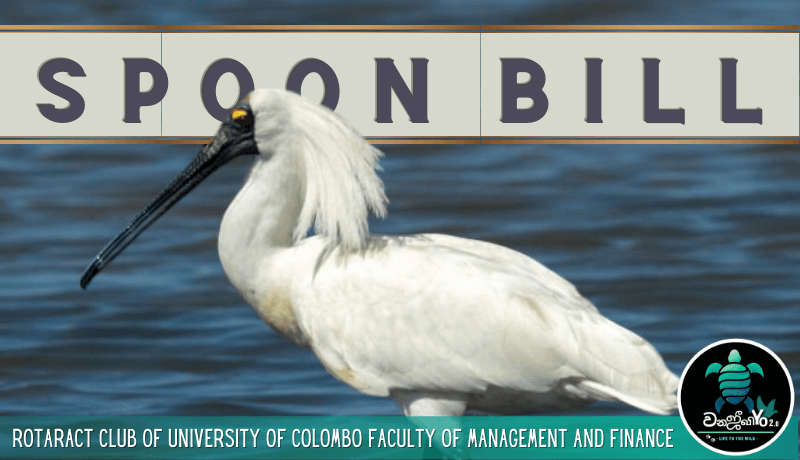General
Large, long-legged wading birds belonging to the Platalea genus are called Spoonbills. Spoonbills are unique aquatic birds with a flattened beak that flares at the end like a spoon. Spoonbills live across most of the world. These birds dwell in shallow waters where they can wade in search of food.
Distribution and habitat
Various species of these birds live across every continent in the world except Antarctica. They are widespread and are common birds that live in a variety of regions. The Eurasian Spoonbills live across a vast expanse of area and are primarily found in Europe and Asia. Other species live in Australia, Asia, Africa, North America, South America, and Central America.
Even though they are profoundly found in fresh waters they also live in salt and brackish water systems. Marshes, wetlands, mangroves, swamps, lakes, ponds, and mud flats are other preferred habitats for these birds. Most often Spoonbills live in zoos because they cannot survive in the wild. Zoos and Aquariums give permanent shelter and veterinary care to these birds and take good care of them.
Appearance
Spoonbills have a significantly long flattened beak and a moderately long neck. Their long featherless legs are helpful for wading through shallow waters. These birds’ appearances vary slightly from species to species and are about two and a half feet tall.
Diet
They eat a variety of food including small fish, snails, shrimps, insects, crabs, and some plants. Most of the time, they feed on anything they can catch. Their specialized and unique bill is used to catch food. During the process of hunting prey, they wade through shallow waters while swaying their bill back and forth through the mud and water. Once they find the prey, they snatch it up in their beak.
Breeding/ Nesting
Male birds will help in caring for the chicks. Sometimes they do participate in incubation, but it depends on their species. The chicks take around 4 to 6 weeks to begin leaving the nest and flying on their own.

සාමාන්ය
ප්ලැටේලියා කුලයට අයත් විශාල, දිගු කකුල් සහිත කුරුල්ලන් හැදි අලවන් ලෙස හැඳින්වේ. හැදි අලවන් යනු හැන්දක් මෙන් අවසානයේ දැල්වෙන පැතලි හොටක් සහිත අද්විතීය ජලජ පක්ෂීන් වේ. හැදි අලවන් ලෝකයේ බොහෝ ප්රදේශවල ජීවත් වේ. මෙම පක්ෂීන් නොගැඹුරු ජලයේ වාසය කරන අතර එහිදී ඔවුන්ට ආහාර සොයා යා හැකිය.
පැතිරීම සහ වාසස්ථාන
මෙම පක්ෂීන්ගේ විවිධ විශේෂ ඇන්ටාක්ටිකාව හැර ලෝකයේ සෑම මහාද්වීපයකම ජීවත් වේ. ඔවුන් බහුලව පැතිරී ඇති අතර විවිධ කලාපවල ජීවත් වන පොදු පක්ෂීන් වේ. යුරේසියානු හැදි අලවන් විශාල ප්රදේශයක් පුරා ජීවත් වන අතර යුරෝපයේ සහ ආසියාවේ බහුලව දක්නට ලැබේ. ඔස්ට්රේලියාව, ආසියාව, අප්රිකාව, උතුරු ඇමරිකාව, දකුණු ඇමරිකාව සහ මධ්යම ඇමරිකාව යන ප්රදේශවල විවිධ අනෙකුත් විශේෂ ජීවත් වේ.
ඔවුන් මිරිදිය ජලයේ ගැඹුරින් හමු වුවද, ඔවුන් ජීවත් වන්නේ ලුණු හා කිවුල් ජල පද්ධතිවල ය. වගුරු බිම්, තෙත්බිම්, කඩොලාන, වගුරු බිම්, විල්, පොකුණු සහ මඩ තට්ටු මෙම පක්ෂීන් සඳහා වඩාත් කැමති වාසස්ථාන වේ. බොහෝ විට හැදි අලවන් සත්වෝද්යාන වල ජීවත් වන්නේ ඔවුන්ට වනයේ ජීවත් විය නොහැකි බැවිනි. සත්වෝද්යාන සහ මින්මැදුර මෙම පක්ෂීන්ට ස්ථිර නවාතැන් සහ පශු වෛද්ය රැකවරණය ලබා දෙන අතර ඔවුන් හොඳින් රැකබලා ගනී.
පෙනුම
හැදි අලවන්ට සැලකිය යුතු දිගු පැතලි හොටක් සහ මධ්යස්ථ දිගු බෙල්ලක් ඇත. ඔවුන්ගේ දිගු පිහාටු රහිත කකුල් නොගැඹුරු ජලය හරහා ගමන් කිරීමට උපකාරී වේ. මෙම පක්ෂීන්ගේ පෙනුම විශේෂයෙන් විශේෂයට තරමක් වෙනස් වන අතර උස අඩි දෙකහමාරක් පමණ වේ.
ආහාර වේල
ඔවුන් කුඩා මාළු, ගොළුබෙල්ලන්, ඉස්සන්, කෘමීන්, කකුළුවන් සහ සමහර ශාක ඇතුළු විවිධ ආහාර අනුභව කරති. බොහෝ විට, ඔවුන් අල්ලා ගත හැකි ඕනෑම දෙයක් පෝෂණය කරති. ඔවුන්ගේ විශේෂිත සහ අද්විතීය බිල්පත් ආහාර අල්ලා ගැනීම සඳහා භාවිතා වේ. ගොදුරු දඩයම් කිරීමේ ක්රියාවලියේදී, මඩ සහ ජලය හරහා තම බිල්පත එහා මෙහා කරමින් නොගැඹුරු ජලය හරහා ගමන් කරයි. ඔවුන් ගොදුර සොයාගත් පසු, ඔවුන් එය ඔවුන්ගේ හොටෙන් උදුරා ගනී.
අභිජනනය / කැදැලි තැනීම
පිරිමි පක්ෂීන් පැටවුන් රැකබලා ගැනීමට උපකාර කරනු ඇත. පැටවුන්ට කූඩුවෙන් පිටවී තනිවම පියාසර කිරීමට සති 4 සිට 6 දක්වා ගත වේ.

பொது
பிளாட்டாலியா இனத்தைச் சேர்ந்த பெரிய, நீண்ட கால் பறவைகள் ஸ்பூன்பில்ஸ் என்று அழைக்கப்படுகின்றன. ஸ்பூன்பில்ஸ் என்பது ஒரு தட்டையான கொக்கைக் கொண்ட தனித்துவமான நீர்வாழ் பறவைகள் ஆகும், அவை ஒரு ஸ்பூன் போல முடிவில் எரியும். ஸ்பூன்பில்கள் உலகின் பெரும்பாலான பகுதிகளில் வாழ்கின்றன. இந்த பறவைகள் ஆழமற்ற நீரில் வாழ்கின்றன, அங்கு அவை உணவைத் தேடி அலைகின்றன.
விநியோகம் மற்றும் வாழ்விடம்
இந்த பறவைகளின் பல்வேறு இனங்கள் அண்டார்டிகாவைத் தவிர உலகின் அனைத்து கண்டங்களிலும் வாழ்கின்றன. அவை பரவலாக பல்வேறு பகுதிகளில் வாழும் பொதுவான பறவைகள். யூரேசியன் ஸ்பூன்பில்கள் பரந்த பரப்பளவில் வாழ்கின்றன மற்றும் பெரும்பாலும் ஐரோப்பா மற்றும் ஆசியாவில் காணப்படுகின்றன. ஆஸ்திரேலியா, ஆசியா, ஆப்பிரிக்கா, வட அமெரிக்கா, தென் அமெரிக்கா மற்றும் மத்திய அமெரிக்காவில் பல்வேறு பிற இனங்கள் வாழ்கின்றன.
அவை ஆழமாக தூய்மையான நீரில் காணப்பட்டாலும், அவை உப்பு மற்றும் உவர் நீர் அமைப்புகளிலும் வாழ்கின்றன. சதுப்பு நிலங்கள், ஏரிகள், குளங்கள் மற்றும் மண் அடுக்குகள் ஆகியவை இப்பறவைகளுக்கு விருப்பமான பிற வாழ்விடங்களாகும். பெரும்பாலும் ஸ்பூன்பில்கள் உயிரியல் பூங்காக்களில் வாழ்கின்றன, ஏனெனில் அவை காடுகளில் வாழ முடியாது. மீன்வளங்கள் இந்தப் பறவைகளுக்கு நிரந்தர தங்குமிடம் மற்றும் கால்நடை பராமரிப்பு வழங்குவதோடு, அவற்றை நன்றாகப் பராமரிக்கின்றன.
தோற்றம்
ஸ்பூன்பில்கள் குறிப்பிடத்தக்க நீளமான தட்டையான கொக்கு மற்றும் மிதமான நீளமான கழுத்தைக் கொண்டுள்ளன. அவற்றின் நீண்ட இறகுகள் இல்லாத கால்கள் ஆழமற்ற நீரில் அலைவதற்கு உதவியாக இருக்கும். இந்த பறவைகளின் தோற்றம் இனத்திற்கு இனம் சிறிது மாறுபடும் மற்றும் இரண்டரை அடி உயரம் கொண்டது.
உணவுமுறை
அவர்கள் சிறிய மீன்கள், நத்தைகள், இறால்கள், பூச்சிகள், நண்டுகள் மற்றும் சில தாவரங்கள் உட்பட பல்வேறு உணவுகளை உண்கின்றனர். பெரும்பாலான நேரங்களில், அவை பிடிக்கக்கூடிய எதையும் சாப்பிடுகின்றன. அவற்றின் சிறப்பு மற்றும் தனித்துவமான பில் உணவு பிடிக்க பயன்படுத்தப்படுகிறது. இரையை வேட்டையாடும் செயல்பாட்டின் போது, அவை ஆழமற்ற நீரில் அலைந்து, சேறு மற்றும் நீர் வழியாக முன்னும் பின்னுமாக அலைகின்றன. அவர்கள் இரையைக் கண்டுபிடித்தவுடன், அவர்கள் அதை தங்கள் கொக்கில் பிடுங்குகிறன.
இனப்பெருக்கம்/ கூடு கட்டுதல்
ஆண் பறவைகள் குஞ்சுகளைப் பராமரிக்க உதவும். சில நேரங்களில் அவை அடைகாக்கும் செயற்பாட்டில் பங்கேற்கின்றன, ஆனால் அது அவற்றின் இனத்தைப் பொறுத்தது. குஞ்சுகள் கூட்டை விட்டு வெளியேறி தாங்களாகவே பறக்க ஆரம்பிக்க சுமார் 4 முதல் 6 வாரங்கள் ஆகும்.




